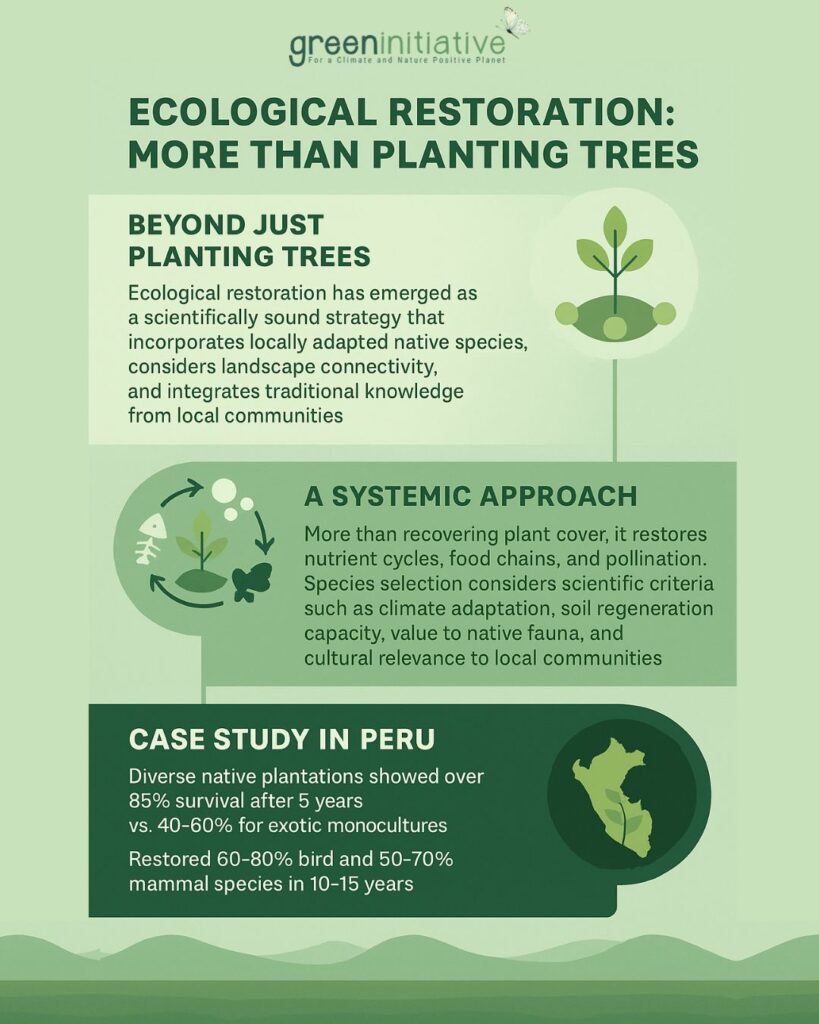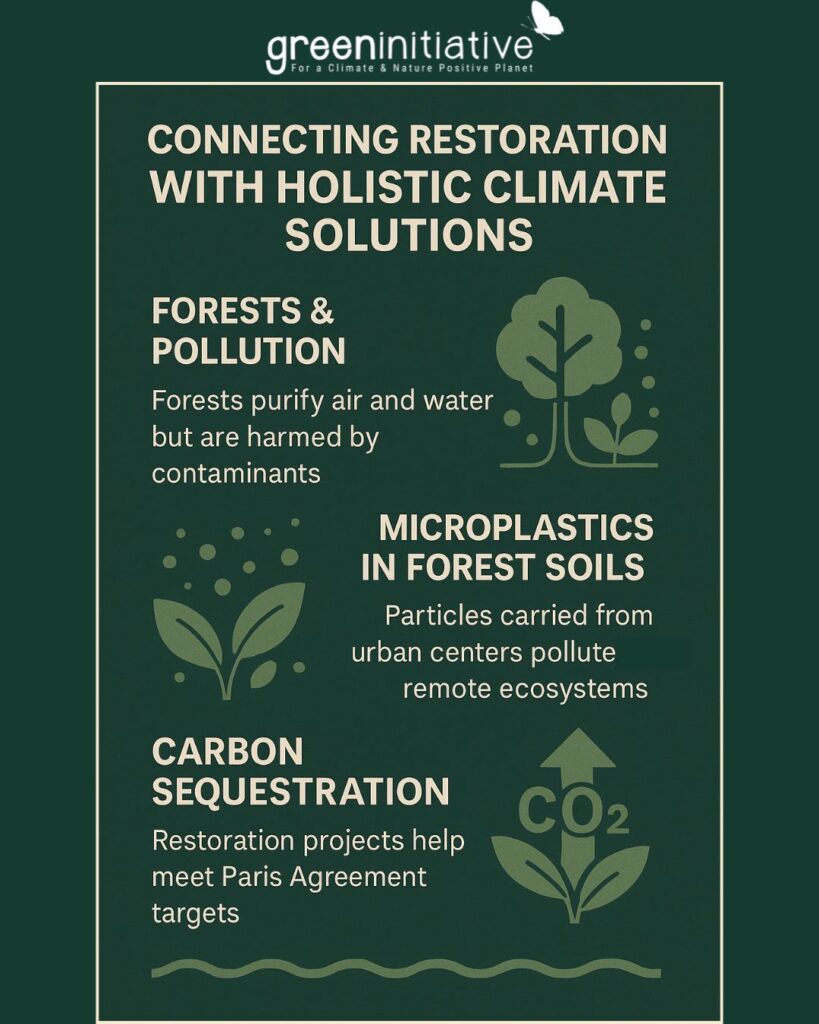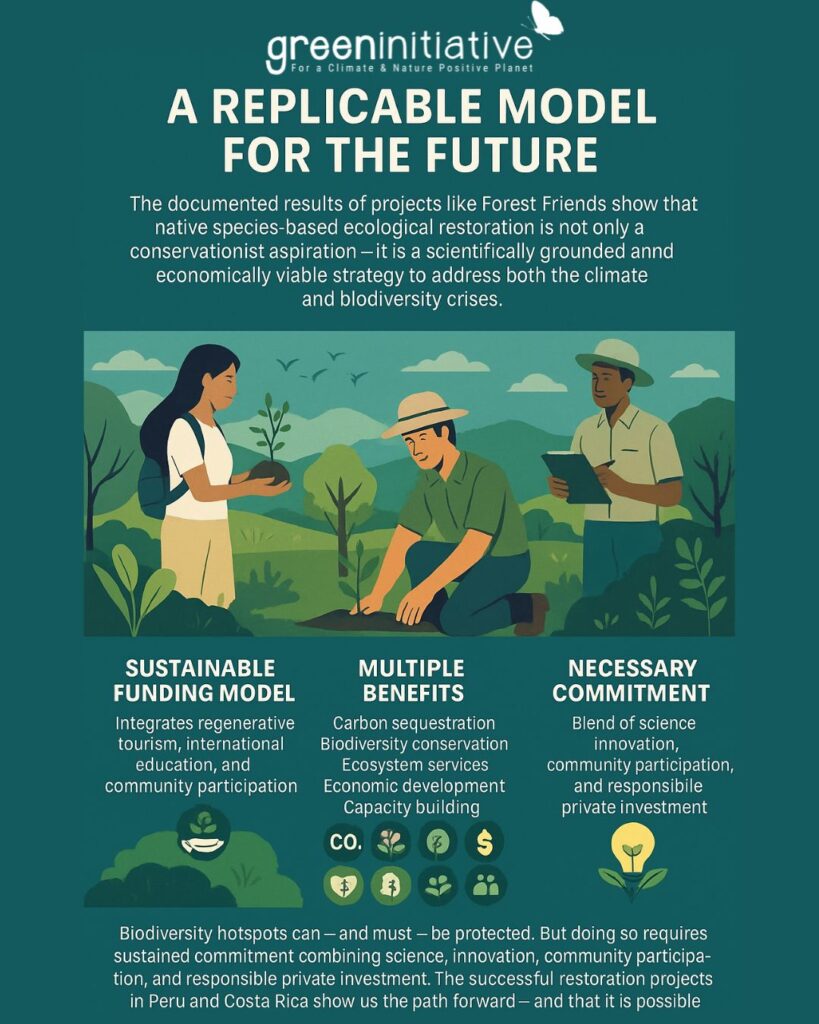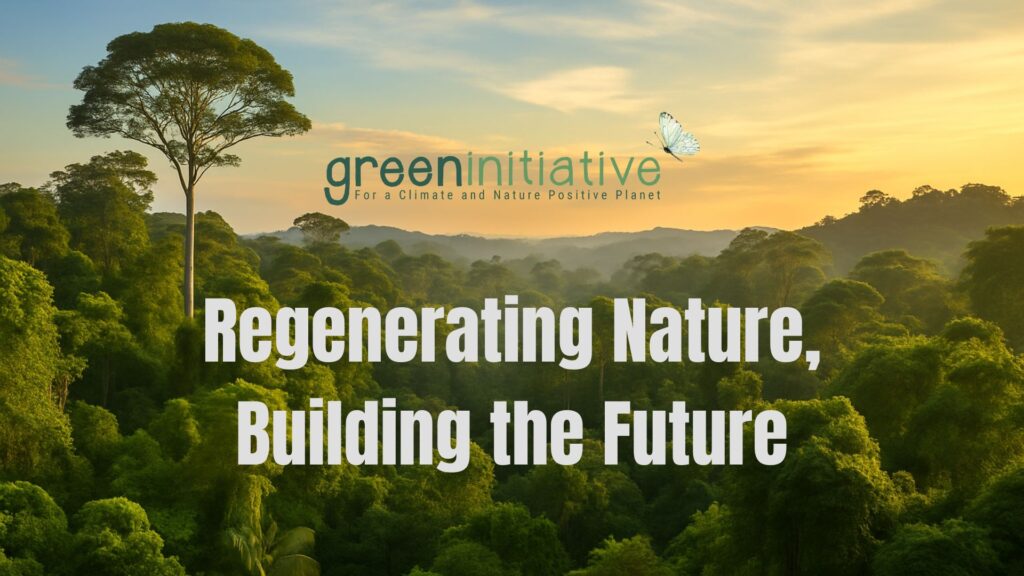The forests of South and Central America are among the most diverse and ecologically important ecosystems on the planet. From the vast Amazon rainforest spanning nine countries and containing approximately 10% of the world’s known biodiversity, to the cloud forests of Central America that serve as crucial biological corridors between North and South America, these ecosystems harbor extraordinary biological wealth [1]. The Neotropical region hosts more than 50% of the world’s vascular plant species and 36 of the 200 globally identified biodiversity hotspots, making it a top global conservation priority [2].
Peru and Costa Rica: Natural Treasures at Risk
In this regional context, Peru’s forests represent one of the planet’s most valuable ecosystems, housing approximately 13% of the Amazon and comprising 57% of national territory with over 73 million hectares of forest [3]. These ecosystems not only harbor extraordinary biodiversity—with over 25,000 plant species and 3,000 vertebrate species—but also play a crucial role in global climate regulation, storing approximately 10 billion tons of carbon [4].
Costa Rica, while occupying only 0.03% of the Earth’s surface, is home to about 4% of the planet’s biodiversity, with over 500,000 documented species [5]. Its forests—which include tropical rainforests and mountain cloud forests—cover approximately 54% of the national territory and comprise one of the most successful protected area systems in Latin America. The Osa Peninsula, in particular, has been recognized by National Geographic as “the most biologically intense place on Earth,” concentrating 2.5% of global biodiversity in just 700 km² [6].

However, these natural treasures face increasing, scientifically documented threats. According to Peru’s National Forest Conservation Program, the country lost 1.8 million hectares of forest between 2001 and 2020, primarily due to migratory agriculture, extensive livestock farming, and illegal mining [7]. This deforestation not only represents irreversible biodiversity loss but also contributes significantly to national greenhouse gas emissions, accounting for about 47% of the country’s total emissions [8].
Similarly, despite its successful conservation policies, Costa Rica lost 24,000 hectares of forest cover between 2010 and 2020, mainly due to the expansion of industrial agriculture, urban development, and unsustainable tourism [9]. Though proportionally smaller, this deforestation is especially concerning due to the high concentration of endemic species in relatively small areas, where the loss of just one hectare may mean the local extinction of multiple species.
Ecological Restoration: More Than Planting Trees
In light of this reality, ecological restoration has emerged as a scientifically sound strategy that goes beyond just planting trees. International research has shown that the most successful restoration projects are those that incorporate locally adapted native species, consider landscape connectivity, and integrate traditional knowledge from local communities [10].
Effective ecological restoration requires a systemic approach that considers multiple interconnected factors. It’s not just about recovering plant cover, but restoring ecological processes that maintain ecosystem functionality: nutrient cycles, food chains, pollination, and seed dispersal [11]. Species selection should be based on scientific criteria, including climate adaptation, soil regeneration capacity, value to native fauna, and cultural relevance to Indigenous and local communities.
In Peru, this approach is particularly relevant. Studies in the Peruvian Amazon have found that plantations with diverse native species show survival rates above 85% after five years—compared to 40–60% for monocultures with exotic species [12]. These plantations also contribute more effectively to biodiversity recovery, recording a return of 60–80% of bird species and 50–70% of mammal species within 10–15 years [13].

Forest Friends: A Model of Restoration Success
The most promising restoration projects integrate science, technology, and community participation across multiple biodiversity hotspots. Forest Friends, a Green Initiative program, has developed a comprehensive ecosystem restoration approach. It implements reforestation with a diverse range of native plant species in strategic regions such as Peru’s Tambopata National Reserve and Costa Rica’s Osa Peninsula—both classified as Biodiversity Hotspots by the Critical Ecosystem Partnership Fund (CEPF). These hotspots must host at least 1,500 endemic vascular plant species and have lost at least 70% of their primary native vegetation, making them top priorities for biodiversity conservation and ecological restoration [14].
In Madre de Dios, Peru, a region that has lost over 200,000 hectares of forest mainly due to illegal gold mining, Forest Friends has demonstrated measurable results with a restoration approach prioritizing locally adapted native species. Collaboration with organizations like Kuoda Travel has enabled the development of an innovative regenerative tourism model that directly links carbon offsetting with local restoration projects. Each traveler not only offsets their emissions but contributes to the planting of native trees specifically selected to maximize both carbon sequestration and biodiversity recovery.

In parallel, in Costa Rica’s Osa Peninsula, organizations like Swetours and Tulu Travel apply similar certification models that link sustainable tourism with ecosystem restoration, while CEPA – Customized Educational Programs Abroad has implemented an innovative model connecting international education with conservation. They issue restoration certificates for each university course delivered and plant trees according to the number of enrolled students.
These binational models offer valuable lessons on private sector involvement in conservation. Collaboration with specialized local partners—such as Inkaterra in Peru and Fundación Saimiri in Costa Rica—ensures technical quality and real environmental impact of restoration actions.
Scientific Monitoring: The Key to Long-Term Success
A crucial—but often underestimated—component of restoration projects is ongoing scientific monitoring. Research has shown that the long-term success of ecological restoration depends directly on the ability to systematically track and adapt implemented strategies [15].
Effective monitoring must evaluate multiple ecological indicators: tree survival and growth, soil structure recovery, natural regeneration of native species, return of vertebrate and invertebrate fauna, and functionality of ecological processes like pollination and seed dispersal [16].
In Madre de Dios, Ucayali, and San Martín, monitoring protocols combine remote sensing technologies—including high-resolution satellite imagery and drones—with participatory field assessments involving local communities. This approach has documented that restored areas show an average 40% increase in biomass and 65% recovery in species diversity after five years [17].
Community participation in monitoring not only reduces operational costs but also strengthens local capacities and ensures long-term project sustainability. Communities trained in monitoring techniques become active guardians of restored forests, contributing to their protection and adaptive management.

Connecting Restoration with Holistic Climate Solutions
As part of World Environment Day 2025 and the #BeatPlasticPollution campaign, it’s critical to understand that forest protection and pollution reduction are complementary and interdependent strategies. Forests act as natural filters that purify air and water—but their ability to provide these ecosystem services is compromised when exposed to contaminants like microplastics, heavy metals, and agrochemicals.
Recent research has documented the presence of microplastics in Amazon forest soils, mainly transported via the atmosphere from distant urban centers. This raises questions about their effects on forest ecosystem health and the effectiveness of restoration projects. This reality underscores the importance of addressing both ecological restoration and pollution prevention simultaneously.
Forest restoration projects also make a significant contribution to climate change mitigation [18]. Restored forests in the Peruvian Amazon can sequester 150–200 tons of CO₂ per hectare over 30 years, contributing to national emission reduction targets and the global goals of the Paris Agreement [19].

A Replicable Model for the Future
The documented results of projects like Forest Friends show that native species-based ecological restoration is not only a conservationist aspiration—it is a scientifically grounded and economically viable strategy to address both the climate crisis and the biodiversity crisis.
By integrating regenerative tourism, international environmental education, and community participation, these projects create a sustainable funding model that can be replicated in other biodiversity hotspots.
Their success lies in the ability to deliver multiple benefits: carbon sequestration, biodiversity conservation, ecosystem service enhancement, local economic development, and community capacity building. This holistic approach represents a paradigm shift toward development models that recognize the intrinsic value of ecosystems and their fundamental role in human well-being.
Biodiversity hotspots can—and must—be protected. But doing so requires sustained commitment combining science, innovation, community participation, and responsible private investment. The successful restoration projects in Peru and Costa Rica show us the path forward—and that it is possible to regenerate nature while building a more resilient and equitable future for all.


This article was written by Virna Chávez from the Green Initiative Team.
References by the author:
[1] WWF – World Wildlife Fund. (2023). Living Planet Report 2023: Building a nature-positive society. Gland: WWF International.
[2] Myers, N., Mittermeier, R. A., Mittermeier, C. G., da Fonseca, G. A., & Kent, J. (2000). Biodiversity hotspots for conservation priorities. Nature, 403(6772), 853-858. https://doi.org/10.1038/35002501
[3] SERFOR – Servicio Nacional Forestal y de Fauna Silvestre. (2023). Anuario Estadístico Forestal y de Fauna Silvestre 2022. Lima: SERFOR.
[4] MINAM – Ministerio del Ambiente del Perú. (2021). Mapa Nacional de Ecosistemas del Perú: Memoria Descriptiva. Lima: MINAM.
[5] SINAC – Sistema Nacional de Áreas de Conservación. (2022). Estadísticas de Biodiversidad de Costa Rica 2022. San José: SINAC.
[6] Conservation International. (2021). Biodiversity Assessment of the Osa Peninsula: Critical Ecosystem Partnership Fund Report. Arlington: Conservation International.
[7] PNCB – Programa Nacional de Conservación de Bosques. (2021). Reporte de la superficie de bosque húmedo amazónico pérdida en el período 2020. Lima: SERFOR
[8] MINAM – Ministerio del Ambiente del Perú. (2020). Cuarta Comunicación Nacional del Perú a la Convención Marco de las Naciones Unidas sobre Cambio Climático. Lima: MINAM
[9] FONAFIFO – Fondo Nacional de Financiamiento Forestal. (2021). Estadísticas Forestales de Costa Rica 2010-2020. San José: FONAFIFO.
[10] Chazdon, R. L., & Brancalion, P. H. (2019). Restoring forests as a means to many ends. Science, 365(6448), 24-25. https://doi.org/10.1126/science.aax9539
[11] Society for Ecological Restoration. (2019). International Standards for the Practice of Ecological Restoration – Including Principles and Key Concepts. Washington, DC: Society for Ecological Restoration.
[12] IIAP – Instituto de Investigaciones de la Amazonía Peruana. (2022). Evaluación de técnicas de restauración forestal con especies nativas en la Amazonía peruana. Iquitos: IIAP.
[13] CIAT – Centro Internacional de Agricultura Tropical. (2021). Restauración de paisajes forestales en la Amazonía peruana: Lecciones aprendidas y recomendaciones. Lima: CIAT.
[14] Green Initiative. (2023). Forest Friends Annual Report: Impact Assessment and Carbon Sequestration Analysis. Lima: Green Initiative
[15] Mansourian, S., et al. (2021). Putting the pieces together: Integration for forest landscape restoration implementation. Land Use Policy, 105, 105381. https://doi.org/10.1016/j.landusepol.2021.105381
[16] Ruiz-Jaén, M. C., & Aide, T. M. (2005). Restoration success: How is it being measured? Restoration Ecology, 13(3), 569-577. https://doi.org/10.1111/j.1526-100X.2005.00072.x [1] SERFOR – Servicio Nacional Forestal y de Fauna Silvestre. (2022). Monitoreo de la restauración forestal en áreas prioritarias: Informe técnico 2022. Lima: SERFOR.
[17] Silva, A. B., et al. (2022). Microplastic contamination in Amazonian soils: A growing concern for forest ecosystem health. Environmental Pollution, 298, 118847. https://doi.org/10.1016/j.envpol.2022.118847
[18] Vargas, R., et al. (2019). Carbon storage potential of restored forests in the Peruvian Amazon. Forest Ecology and Management, 438, 76-87. https://doi.org/10.1016/j.foreco.2019.02.015

